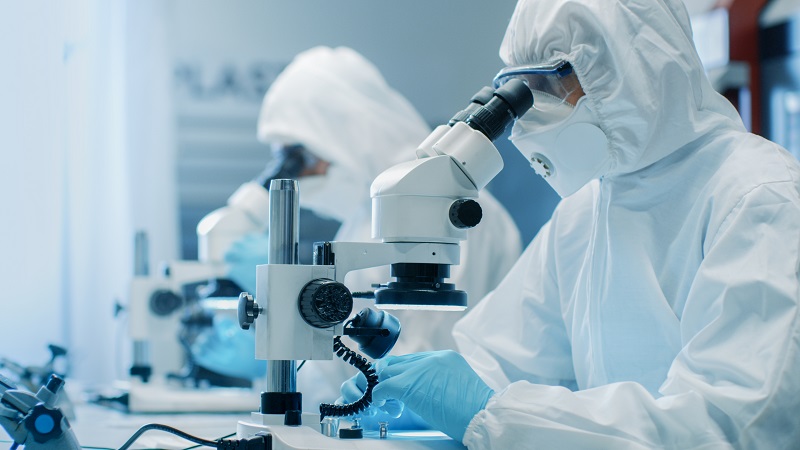Where does R&D go in Covid-19 time?

In 2020, the Covid-19 pandemic almost stopped life all over the world. But it did not interrupt the cycle of R&D in life sciences. Activities largely continued, with vaccines being developed in an average of 7 months compared to 9 years and 4 months for other vaccines. According to the latest Iqvia report (1) "the life sciences innovation system - including hundreds of companies, governments, researchers, doctors, and nurses - adapted to the COVID-19 pandemic in ways large and small". Let's discover what the main trends of 2020 were, which are likely to go on throughout 2021.
Clinical Trial Activity remained historically high, Iqvia report said. The more than 850 interventional industry-sponsored trials for COVID-19 vaccines and therapeutics have yielded 16 approvals to-date and a robust pipeline of additional ongoing studies.
Clinical trial starts increased 8% in 2020, as the industry adapted quickly to shifting priorities and logistical challenges. The growth was similar to the prior three years. During the course of 2020, trial starts fell significantly in the first quarter but recovered mid-year to higher levels than in 2019 even without the COVID-19 trial.
Among diseases, oncology and rare diseases were two of the largest areas of clinical trials. Both represented areas less disrupted by COVID-19. Oncology trial starts in 2020 reached historically high levels, 60% more than were started in 2015. In the meantime, clinical trial starts in other important disease areas declined slightly in 2020, below 2019 levels, reflecting shifting priorities for sponsors and investigators. In most cases, however, the number of trial starts was at or above the 2018 level and represented only temporary disruptions to activity.
Clinical Development Productivity remained "historically" low in 2020, according to Iqvia, as a result of rising trial durations, increased complexity of disease targets and their associated trial protocol designs.
However, productivity rose in 2020 (a composite metric of success rates, clinical trial complexity and trial duration), for the first time in five years. And the composite success rate across all therapy areas rose slightly to 9.8% in 2020, up from 2019, but still lower than the 10-year average of 12.9%.
Each of the productivity elements vary substantially across diseases, with success rates ranging from a high of 32% for rare drugs to less than 10% for vaccines, endocrinology, neurology, and cardiovascular. Rare and oncology trials often take longer to complete than other diseases and are more complex due to eligibility criteria and endpoints. Vaccines had a very successful 2020, thanks to COVID-19 trials, reversing a four-year trend of composite success rates below 3%.
In terms of R&D Pipeline, Iqvia explained that growth in the early-stage pipeline paused in 2020, while the late-stage pipeline grew modestly. There were more than 5,700 drugs in the early-stage pipeline (versus 6,607 products in 2019) and over 3,200 in the late-stage pipeline.
In details, total early-stage pipeline products declined by 13% in 2020, the first reduction since 2014, bringing the number of total products back to 2018 levels. In the late-stage pipeline, the number of products increased by 3%, bringing total expansion of the pipeline to 43% since 2015.
In both parts of the pipeline, oncology drugs reached record high numbers. Oncology drugs represented more than 40% of the early stage and more than 30% of the late-stage pipeline; both are all-time high proportions of the industry's drug development pipeline. Half of the late phase oncology pipeline was for rare cancers and includes a wide range of next-generation and targeted therapies.
Growth in the pipeline of next-generation biotherapeutics stalled in 2020 after almost doubling in the prior two years, but further growth may be expected in the areas of cell and gene therapy and RNA therapeutics. There were 1,243 products throughout the next generation biotherapeutics pipeline, with nearly half of them (606) in the discovery/preclinical development phase
Funding for early and late-stage R&D increased significantly in 2020, unaffected by the disruptions of COVID-19. According to Iqvia study, aggregate R&D expenditures by the 15 companies with the highest pharmaceutical sales reached $123 billion in 2020 and exceeded 20% of sales for the first time. Since 2015, R&D spending for large companies has increased by 43.6%.
In the meantime, venture capital flows into the life sciences rose by 50% in 2020 over 2019 levels, with interest and valuations in early-stage companies being at all-time highs. There was a peak number of deals (1,738 in 2020), 12% higher than 2019.
Licensing and collaboration deals rose dramatically in 2020 driven by COVID-19. Almost 30% of the collaborative R&D deals signed in 2020 concerned COVID-19; if these are removed from the 2020 data set, then collaborative R&D activity for all other disease areas declined 8% from 2019 to 2020.
Oncology remained the largest area of deal-activity, consistent with its share of the overall pipeline. It represented 16% of all deals in 2020, down from 19% in 2019.
(1). Global Trends in R&D. Iqvia Institute. Overview Through 2020. (May 2021).
RELATED New antibody drug helps patients breathe
